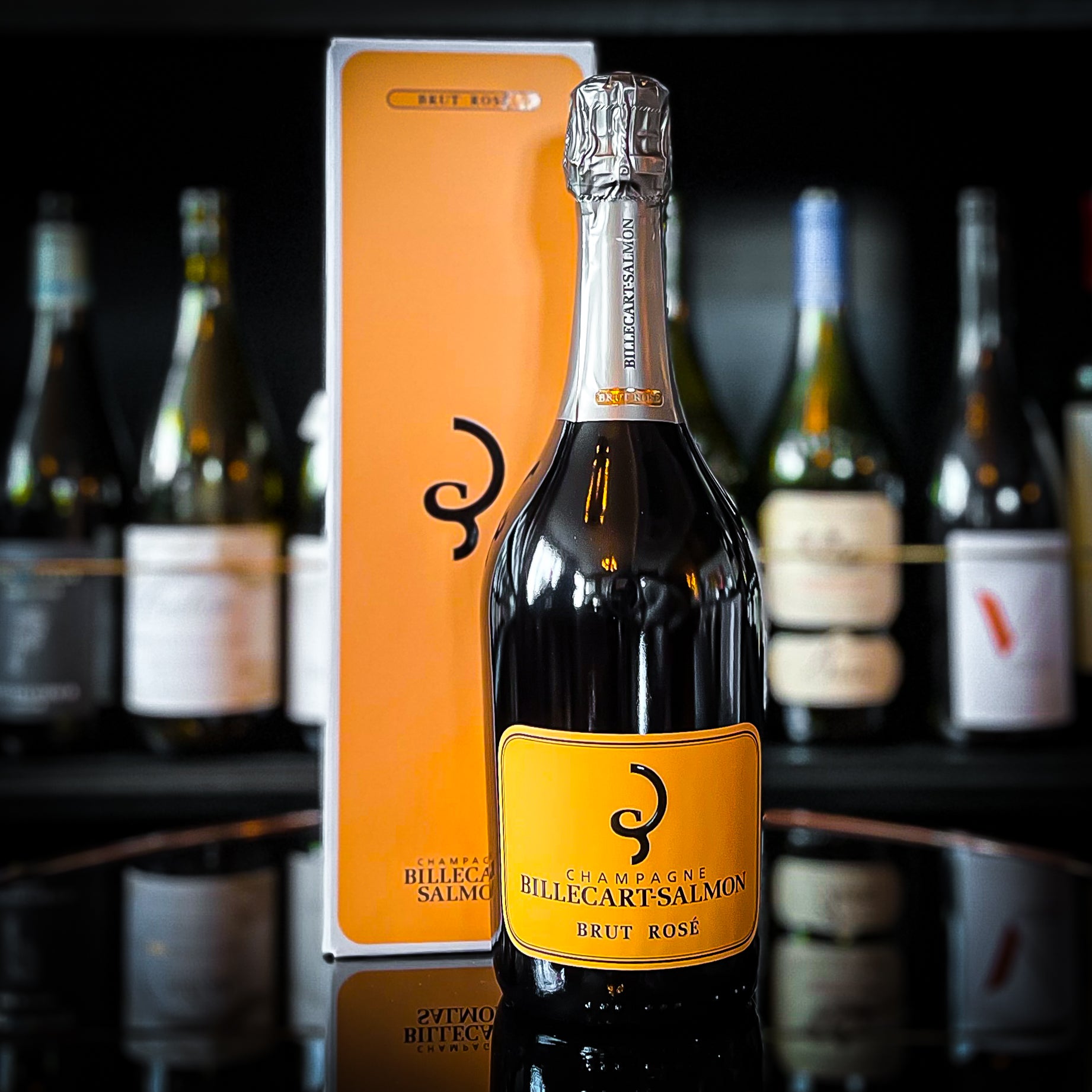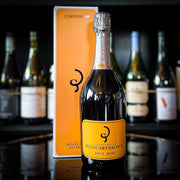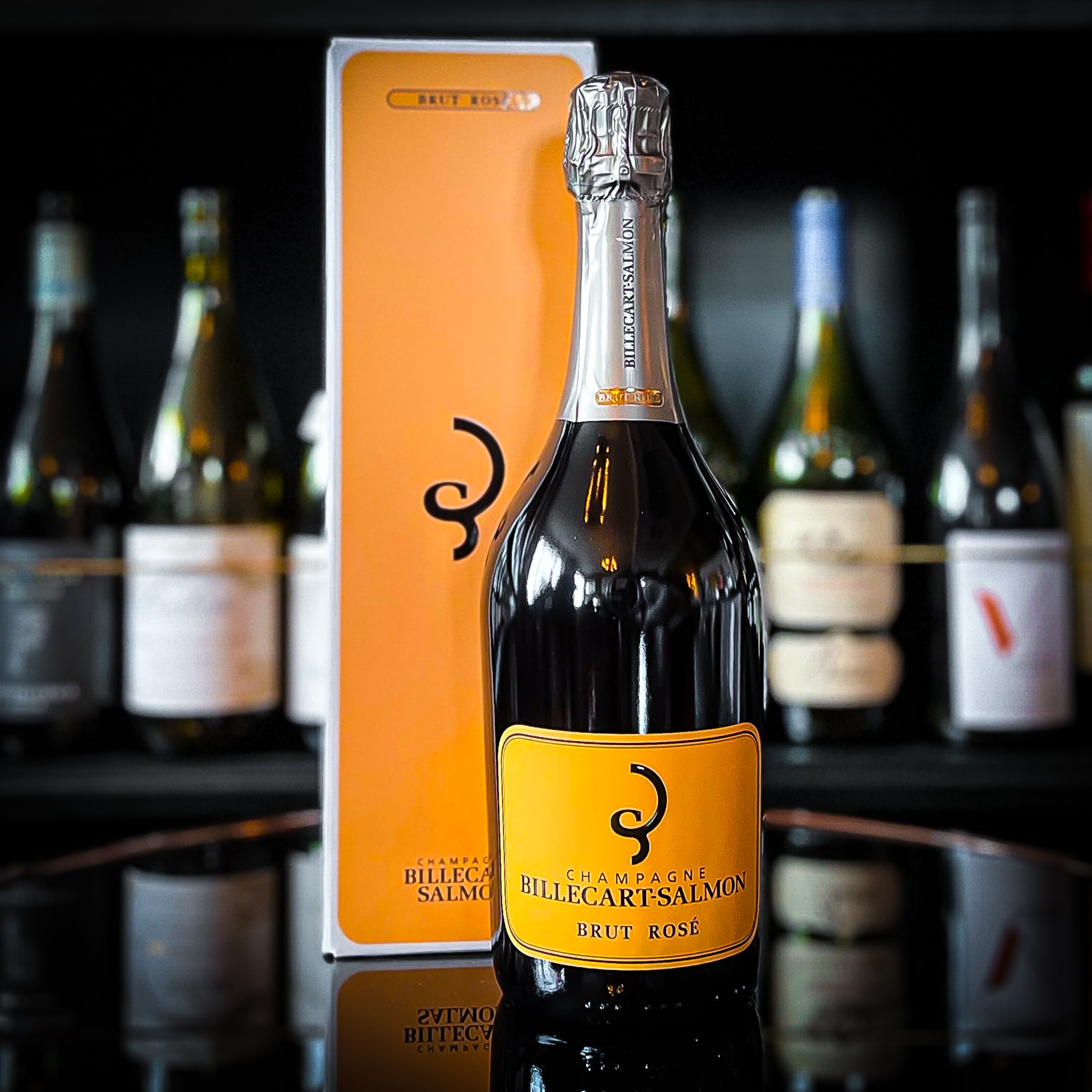Billecart-Salmon Brut Rosé
Billecart-Salmon Brut Rosé
Non-Vintage
One of the very best rosé Champagnes.
Hurry, only 7 items left in stock. Need more? Get in touch
Couldn't load pickup availability
Lauded as one of the finest rosé Champagnes going, Billecart-Salmon harness subtlety and complexity in perfect balance. Bright citrus and red-berry fruit, biscuity notes and a fine, savoury dimension.
Billecart-Salmon Brut Rosé is made from a blend of the three classic Champagne grapes. Forty percent Chardonnay from some of the best crus in the region to give it an amazing flavour profile. Thirty percent Pinot Noir from Montagne de Reims and the Grande Vallee de la Marne to impart colour and finally thirty percent Pinot Meunier to give the wine greater complexity. The wine is aged on the lees for thirty-six months.
A pale-salmon hue, this Champagne feels ripe and full in flavour on the palate, never losing its sense of refinement and poise, finishing with detailed length and depth.
Producer: Billecart-Salmon
Producer: Billecart-Salmon
Region: Champagne
Region: Champagne
Grape: Chardonnay
Grape: Chardonnay
Chardonnay
Pinot Meunier
Pinot Noir
Grape: Pinot Meunier
Grape: Pinot Meunier
Chardonnay
Pinot Meunier
Pinot Noir
Grape: Pinot Noir
Grape: Pinot Noir
Chardonnay
Pinot Meunier
Pinot Noir
Delivery information
UK Mainland
- - England & Wales: Free standard delivery on orders over £150
- - England & Wales: £10.99 standard delivery on orders below £150
- - England & Wales: Saturday delivery is £24.99.
- - Scotland: Standard delivery from £13.99 but this is dependant upon the shipping postcode
- - Scotland: Standard delivery is subsidised on orders over £150
- - Scotland Saturday delivery from £28.99 but this is dependant upon the shipping postcode.
Local delivery
- - We offer free local delivery to GL50, GL51, GL52, GL53 and GL54 on orders over £100.
- - £5.99 on orders below £100.
- - Saturday delivery is £24.99.
UK Non-Mainland (Islands & Highlands)
- - Delivery costs will vary. Please enter your postcode at the checkout to calculate.
- - We are currently unable to deliver to Northern Ireland.
Delivery Times
- - Standard delivery within 5 business days (Monday to Friday)
- - In most cases, if orders are made before 12pm, we will endeavour (with our delivery partner) to deliver the next working day.
Terms & Conditions
- - Tivoli Wines or our delivery partner will notify you by way of email and/or SMS when your goods are to be dispatched to you. The message will contain details of estimated delivery times in addition to any reasons for a delay in the delivery of the Goods purchased by you.
- - If Tivoli Wines receives no communication from you, within 14 days of delivery, regarding any problems with the Goods, you are deemed to have received the Goods in full working order and with no problems.
- - Free delivery qualifies for orders meeting the minimum order value and within the Mainland UK. Non-wine items do not qualify towards the free delivery minimum order value. Should your order change for any reason resulting in the total order value falling below the minimum order value, you may be required to pay an additional fee for delivery.
- - Additional charges may apply to orders outside of mainland UK (e.g. the Scottish Isles, Isle of Wight, Northern Ireland, Scottish Highlands, Channel Islands) or outside the United Kingdom.
- - All goods must be signed for on delivery by an adult aged 18 years or over.
- - If our carrier is unable to deliver your order, it will be returned to us and an additional charge may required for redelivery.
- - Tivoli Wines, nor its chosen carrier, can be held responsible for the security of your order if specific instructions are left for the carrier in your absence or inability to take delivery.
- - Please read our full Terms and Conditions regarding orders and delivery.




